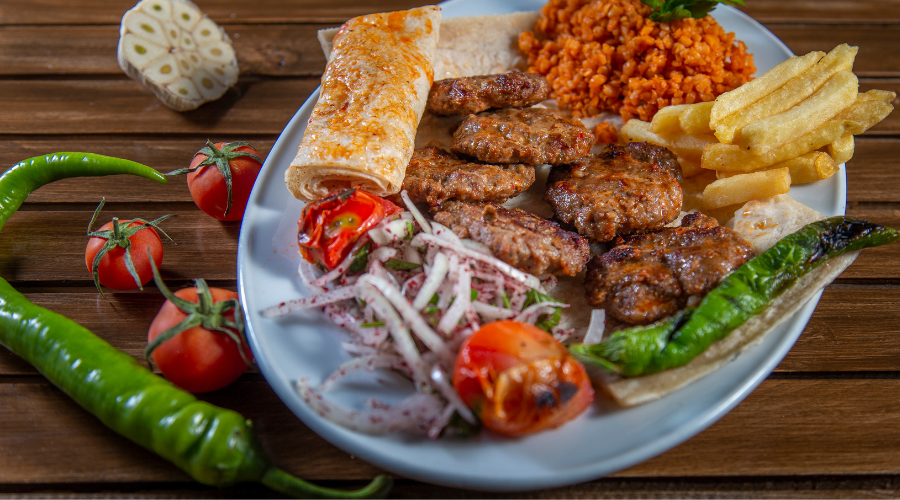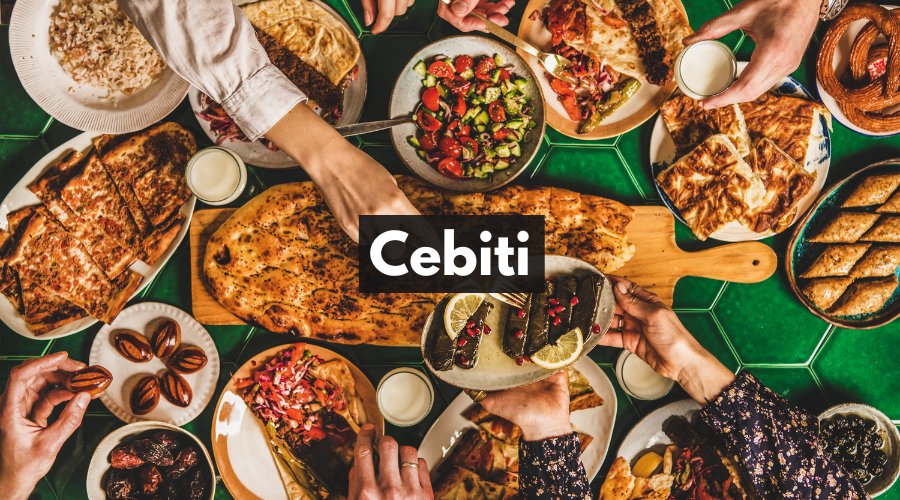Çebiti: A Comprehensive Guide to this Turkish Culinary Delight
Exploring the rich tapestry of Turkish culture and cuisine often leads to delightful discoveries, one of which is the fascinating çebiti. This unique traditional Turkish tea kettle holds a special place in the heart of Turkish tea aficionados, blending functionality with artistry in a distinctive way.
The çebiti isn’t just a teapot; it’s a testament to Turkish tea culture’s essence and practicality. Crafted from durable borosilicate glass, this elegant teapot boasts a gracefully curved spout and handle, ensuring a seamless and aesthetic tea-pouring experience. Its design isn’t just for show; it’s engineered for efficiency, allowing for a smooth and steady flow of tea into each cup, enhancing the ritual of tea serving.
Understanding the çebiti goes beyond its physical attributes; it embodies the spirit of Turkish daily life, where tea is more than just a beverage—it’s a tradition, a social connector, and a moment of respite. Delve into the nuances of çebiti’s design, functionality, and its integral role in Turkish tea customs through this article. You’ll gain a deeper appreciation for this iconic teapot and the timeless rituals it represents, immersing yourself in the warmth and charm of Turkish tea culture.
What Does Çebiti Refer To?

Çebiti is a beloved classic in Turkish cuisine, featuring stuffed vegetables as its star players. Tomatoes, eggplants, bell peppers, and zucchini take center stage, each carefully cleaned and filled with a delicious mixture of rice, ground beef, onions, and aromatic seasonings, then baked to perfection.
Originating from the Ottoman region, Çebiti has earned widespread acclaim across Turkey. Its filling, known as dolma, typically includes a savory blend of rice, onions, ground lamb or beef, and a medley of spices like allspice, cinnamon, mint, black pepper, parsley, and sumac. For an added layer of texture and flavor, toasted pine nuts are a popular optional addition.
Once the stuffed vegetables are cooked to tender perfection, they’re arranged in a baking dish and bathed in a savory broth or pureed tomatoes. Serving Çebiti is a joyous occasion, often enjoyed at room temperature or slightly warmed, creating a cozy and inviting dining experience.
With its wholesome ingredients and aromatic spices, Çebiti encapsulates the essence of Turkish cuisine, cherished by families and savored in restaurants throughout Turkey. It’s a culinary delight that celebrates the rich flavors and traditions of Turkish cooking.
The History of Çebiti
Çebiti’s history traces back to the illustrious era of the Ottoman Empire, renowned for its sophisticated culinary traditions and artistic finesse. As the empire expanded, incorporating diverse regions and cultures, Çebiti emerged as a culinary masterpiece that epitomized the rich variety of Turkish cuisine.
The development of Çebiti reflects the dynamic evolution of Turkish gastronomy over centuries. The Ottomans, known for their culinary ingenuity, skillfully blended ingredients and cooking techniques from the lands they conquered, creating a dish that symbolized the fusion of cultures and flavors within their vast empire.
This iconic dish serves as a testament to the Ottomans’ refined palate and culinary prowess, showcasing their ability to harmonize diverse elements into a harmonious whole. Çebiti stands as a timeless reminder of the Ottoman Empire’s capacity to integrate and celebrate the cultural diversity of the peoples under its reign, leaving behind a legacy of culinary excellence and cultural richness.
Rich Techniques for Crafting Çebiti
Creating Çebiti involves several key methods to ensure its deliciousness and nutritional value:
- Preparing the Filling: Begin by marinating the meat in a flavorful blend of oil, garlic, and spices. This not only tenderizes the meat but also infuses it with rich flavors. Cut the vegetables into bite-sized pieces for even cooking and to blend well with other ingredients.
- Cooking Techniques: Brown the marinated meat in a large skillet over medium heat to develop a deep, savory taste. Once browned, add the chopped vegetables and sauté until they’re tender and release their aromatic flavors. When incorporating grains, ensure to add them with the necessary amount of water for thorough cooking and desired texture.
- Simmering and Slow Cooking: After turning off the heat, let the mixture simmer gently. This slow cooking method allows the flavors to meld beautifully over time, resulting in a harmonious dish.
- Final Touch: After baking, taste the dish and adjust seasoning as needed. Garnish with fresh herbs for a pop of color and added aroma.
Çebiti offers not just culinary delight but also nutritional benefits. Its high protein content from the meat provides essential amino acids, while the vegetables contribute vitamins and fiber, aiding digestion and boosting the immune system. Spices not only enhance taste but also provide antioxidants, although moderation is key, especially when using fatty meats. Opting for leaner cuts can make Çebiti a well-rounded addition to your diet.
Key Components of Çebiti

The essence of Çebiti lies in its carefully curated ingredients, each playing a crucial role in crafting its delectable flavors and textures. To truly appreciate and master the art of Çebiti preparation, it’s essential to grasp the significance of these key components:
Semolina Flour
The foundation of Çebiti dough is semolina, a coarse flour made from durum wheat. This ingredient imparts a unique crunchiness and nutty flavor to Çebiti, creating a delightful balance between chewiness and lightness in every bite.
Cane Sugar:
Adding sweetness to Çebiti is achieved through cane sugar. Whether sprinkled on top or incorporated into the dough, sugar enhances the already decadent flavor of this beloved dessert, satisfying the cravings of those with a sweet tooth.
Butter:
Ghee, or clarified butter in Turkish, lends Çebiti its rich and indulgent taste. Whether melted into the dough or drizzled on before baking, butter contributes a luscious flavor and a velvety texture to Çebiti, elevating its overall appeal.
Dairy Products:
Milk serves as the binding agent in Çebiti dough, ensuring the right texture and consistency. Its creamy richness enhances the soft crumb and moist interior of Çebiti, while also adding a gentle sweetness that complements the flavors.
Rose or Orange Blossom Water:
Infusing Çebiti with aromatic flower waters like rose or orange blossom enhances its sensory appeal. These essences transport diners on a fragrant journey through Turkey’s orchards with each delightful bite.
Additionally, incorporating a hint of ground cinnamon or a sprinkle of chopped nuts such as walnuts or pistachios can add depth and complexity to the flavor profile of Çebiti, making it an even more irresistible treat for the senses.
Delectable Walnuts
Walnuts are indeed a flavorful addition to Çebiti, offering a delightful crunch and a rich, nutty taste that complements its sweetness perfectly. Alongside pistachios and hazelnuts, walnuts serve as both a filling and a garnish, adding depth and texture to Çebiti’s flavor profile.
Their buttery richness enhances the overall sensory experience, creating a harmonious blend of sweetness and nuttiness that makes Çebiti a truly irresistible treat.
FAQs
What is Çebiti?
Çebiti is a classic Turkish dish consisting of stuffed vegetables such as tomatoes, eggplants, bell peppers, and zucchini, filled with a savory mixture of rice, ground meat, onions, and spices. It is a popular and flavorful dish in Turkish cuisine.
What are the key ingredients in Çebiti?
The essential ingredients in Çebiti include semolina flour, cane sugar, butter (ghee), dairy products like milk, and aromatic flower waters such as rose or orange blossom water. These ingredients contribute to its distinctive taste and texture.
How is Çebiti traditionally prepared?
Çebiti is prepared by marinating the meat in a spice mixture, stuffing the vegetables with the meat mixture, and baking them until tender. It is often garnished with chopped nuts like walnuts or pistachios and served with a drizzle of clarified butter.
What makes Çebiti special?
Çebiti is renowned for its flavorful filling, crunchy exterior, and rich, nutty taste from ingredients like walnuts or pistachios. Its combination of savory and sweet flavors, along with its cultural significance in Turkish cuisine, makes it a unique and cherished dish.
Is Çebiti suitable for vegetarians?
Traditional Çebiti contains meat in the filling, making it unsuitable for vegetarians. However, variations can be made with a vegetarian filling using ingredients like rice, lentils, and a variety of vegetables for those following a vegetarian diet.
Can Çebiti be made ahead of time?
Yes, Çebiti can be prepared ahead of time and reheated before serving. It is often enjoyed at room temperature or warmed slightly, allowing the flavors to meld and intensify.
What are some serving suggestions for Çebiti?
Çebiti is typically served as a main dish alongside yogurt, fresh salads, and bread. It pairs well with Turkish tea or other refreshing beverages, creating a complete and satisfying meal.
Conclusion
In conclusion, Çebiti stands as a culinary marvel that reflects the rich tapestry of Turkish cuisine and the cultural heritage of the Ottoman Empire. With its flavorful filling, crunchy texture, and harmonious blend of savory and sweet flavors, Çebiti has captured the hearts and palates of food enthusiasts worldwide.
Through centuries of culinary innovation and cultural exchange, Çebiti has evolved into a symbol of diversity and unity, showcasing the Ottoman Empire’s ability to integrate and celebrate a variety of influences. Its preparation, blending traditional ingredients like semolina flour, cane sugar, butter, and aromatic flower waters, highlights the craftsmanship and artistry inherent in Turkish culinary traditions.
Whether enjoyed as a main dish or part of a festive meal, Çebiti continues to delight and inspire, offering a tantalizing journey through the flavors and history of Turkey. Its enduring popularity and cultural significance make Çebiti not just a dish, but a cherished culinary heritage that bridges the past with the present, inviting us to savor and celebrate the rich culinary legacy of the Ottoman Empire.
Don’t forget to check more news & updates on On Snap Chat!







